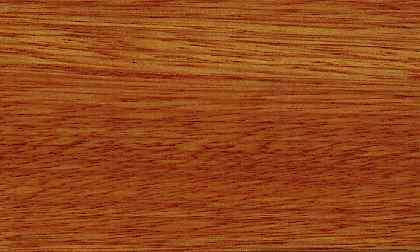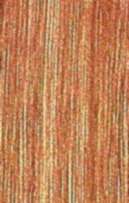 
Aghai (Palaquium galactoxylum)
Family: Sapotaceae
Common names: Aghai, Aimela, Aisulu, Bubungu, Malahala, Nage, Paroto, Red silkwood, Rongo
Distributed in: Australia, Papua New Guinea, Solomon Islands (Oceania and S.E. Asia)
Common uses: Boat building (general), Boxes and crates, Cabinetmaking, Furniture, Joinery, Light construction, Moldings, Paneling, Plywood, Pulp/Paper products, Toys, Turnery, Vehicle parts, Veneer
Colors: the heart isPurple, Redand the sapwoodWell defined, White to yellow.The grain isWeak (figure), the textureMediumand the lusterLustrous
Natural durability: Susceptible to attack from powder post (Lyctid & Bostrychid) beetles, Susceptible to attack from termites (Isoptera)
LightInduced Color Change: Darker
Kiln Schedules: Kiln Drying Rate (in days) is rapid
Kiln Drying Rate: Rapid (<10 days for boards < 32 mm, to <30 days for boards >= 63 mm)
Drying Defects: Slight cupping, Slight twist/warp
Ease of Drying: Easy
Tree Identification: Bole/stem form is buttressed
Comments: General finishing qualities are rated as good
Blunting Effect: High to severe
Boring: Easy
Cutting Resistance: Fairly Difficult to Very Difficult to saw
Gluing: Easy to glue
Nailing: Easy to nail, Holds satisfactorily
Planing: Easy to plane
Resistance to Impregnation: Heartwood is resistant
Response to hand tools: Moderate working qualities
Screwing: Easy to screw
;
Polishing: Good;
- Numerical data Metric
- Numerical data English
- Strength properties
- References
 |
 |
 |
 |
| Item |
Green |
Dry |
Metric |
| Specific Gravity |
|
|
|
| Density |
|
592 |
kg/m3 |
| Bending Strength |
954 |
1473 |
kg/cm2 |
| Crushing Strength |
275 |
449 |
kg/cm2 |
| Hardness |
|
|
kg |
| Impact Strength |
|
|
cm |
| Shearing Strength |
|
93 |
kg/cm2 |
| Stiffness |
83 |
97 |
1000 kg/cm2 |
| Tangential Shrinkage |
|
|
% |
| Radial Shrinkage |
2 |
|
% |
| Weight |
576 |
464 |
kg/m3 |
| Maximum Load |
|
|
cm-kg/cm3 |
| Toughness |
|
|
cm-kg |
| Static Bending |
|
|
kg/cm2 |
|
 |  |  |  | | Item | Green | Dry | English | | Bending Strength | 13576 | 20956 | psi | | Density | | 37 | lbs/ft3 | | Maximum Crushing Strength | 3916 | 6397 | psi | | Shearing Strength | | 1334 | psi | | Stiffness | 1188 | 1383 | 1000 psi | | Weight | 36 | 29 | lbs/ft3 | | Radial Shrinkage | 2 | | % | | Tangential Shrinkage | 4 | | % | |
Density (dry weight) = 31-37 lbs/cu. ft.
Shearing strength (parallel to grain) = low
Modulus of Elasticity (stiffness) = very low
Modulus of Elasticity (stiffness) = low
Max. crushing strength = medium
Density (dry weight) = 46-52 lbs/cu. ft.
Bending strength (MOR) = high
Shrinkage, Tangential = very small
Shrinkage, Radial = very small
Shearing strength (parallel to grain) = very low
Budgen, B.,1981,Shrinkage and density of some Australian and South-East Asian Timbers,C.S.I.R.O. Div. building Res. Tech Paper(2nd Series) No.38Keating, W.G., Bolza, E.,1982,Characteristics properties and uses of timbers. South East Asia, Northern,Australia and the Pacific,C.S.I.R.O. Div. Chemical Technology,Inkata Press,1Papua New Guinea Department of Forests,1972,New Horizons,Forestry in Papua New Guinea,Jacaranda Press PTY Ltd, BrisbanePleydell, G.J.,1970,Timbers of the British Solomon Islands,United Africa Company (Timber) Ltd, London
|









